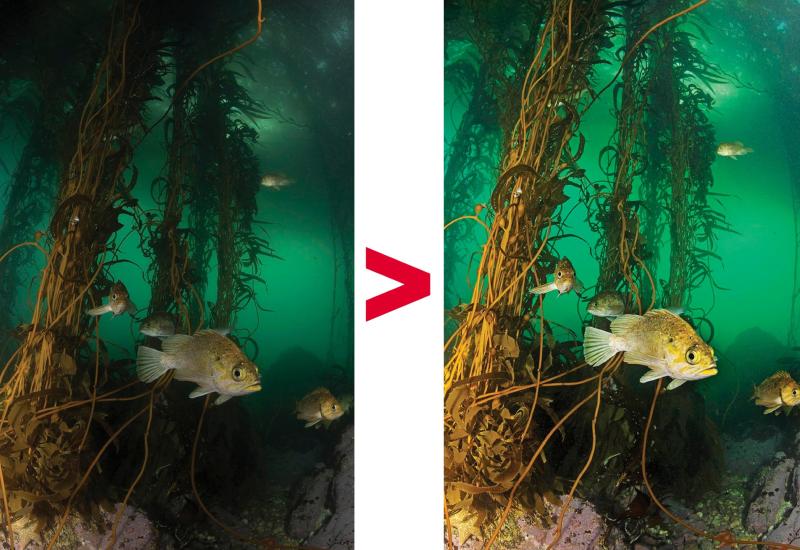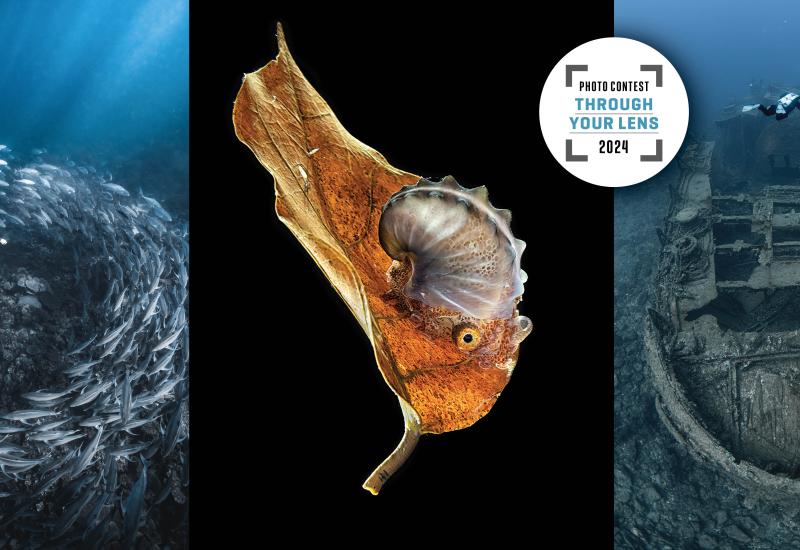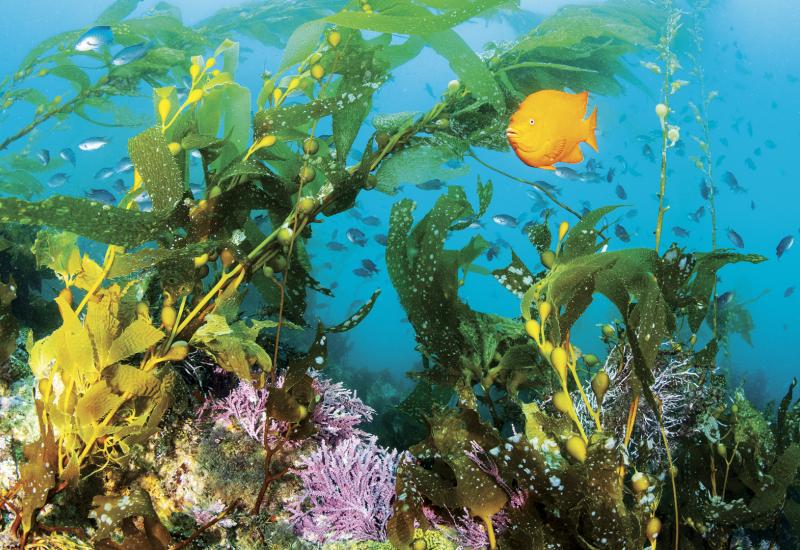What Drives the Shot: Six Underwater Photographers Open Up About Their Careers
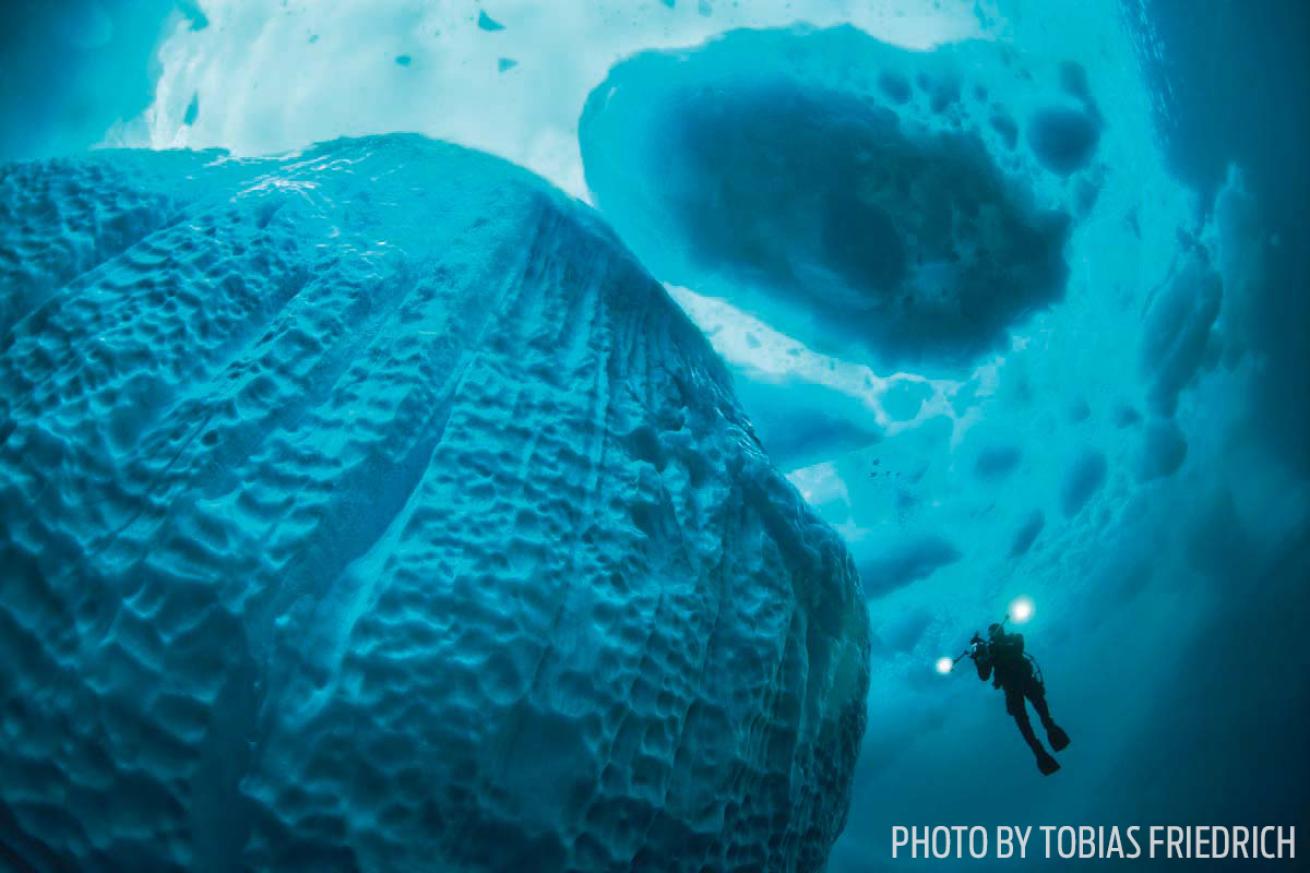
Tobias FriedrichGreenland's immense icebergs loom overhead as Tobias Friedrich's colleague shoots video in the Atlantic Ocean.
Divers don’t just find themselves staring into the gaping mouth of a great white shark, swimming directly beneath the weighty mass of an iceberg or venturing into the dark depths of a cave system per chance. No, these types of endeavors are purpose-driven. Long hours, frozen fingers and agonizing near-misses are all too common in the world of underwater photography. And every dedicated shooter will say that there has to be a reason behind the madness. Every photographer is different, taking cues and gaining passion from his or her personal upbringing, successes and failures. We spoke with six inspirational underwater artists who have found just that: a distinct calling that keeps them loading up gear, diving in and giving it their best shot.

Matt DraperA manta ray off the coast of New South Wales, Australia
THE INSTAGRAM CELEB
To get the shot, you can’t stay on the couch, but you don’t always have to trek far, especially when you live in Byron Bay, Australia, as does Matt Draper. He frequents spots where whales and hundreds of cownose rays regularly cruise. Thanks to a rich hometown marine environment, his local photographs earned the attention of a conservation group that invited him east to Tonga.
Away from home, Draper took a photo that became a pinnacle in his success on Instagram, a photo- and video-sharing social-networking site. It’s called Mother and Calf and captures two humpbacks, cradled by light rays.
The image is powerful for several reasons, and when pressed to name them, Draper says: “It’s an intimate moment — and it has a warming sense.”

Matt DraperMatt Draper is among Instagram’s underwater shooters with the biggest followings. The New Zealand native got his start about two years ago, purchasing a camera and earning a few bucks capturing and selling images of local surfers. “I had no credentials. I was just learning by doing,” says Draper. Find him on Instagram as @mattdraperphotography.
Part of that is thanks to his process.
“All of my images are taken in natural light and all while freediving,” he says. “I try to keep it completely organic.”
When editing, he removes a lot of color, creating what has become the signature look for his fine-art prints. For Draper, the key to a good shot is “the way the eye is looking at you.”
It’s the connection.
To that end, he’s patient in the water, making sure the animal — be it manta or shark — is comfortable. Draper often approaches head-on so as not to spook.
His Instagram audience of more than 69,000 people will attest that these tactics are working. These same followers are also the ones snatching up his prints.
“Most of these people live in Middle America, and they tell me how fascinated they are by sharks,” says Draper. “It’s so humbling to know that anyone who comes into their house now is sharing my moment with that shark.”
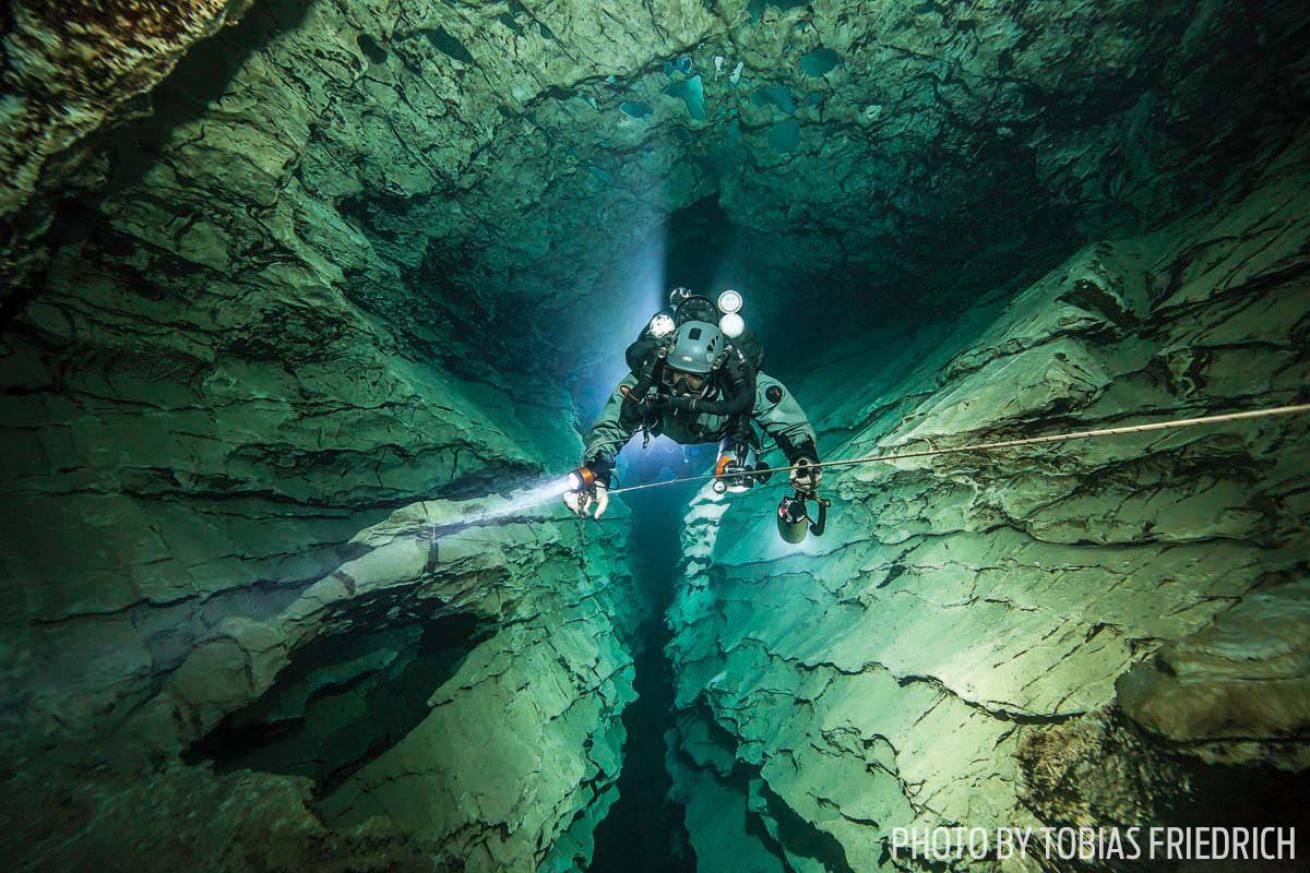
Tobias FriedrichA diver explores Molnár János Cave in Budapest, Hungary
THE THRILL-SEEKER
For shooters such as Tobias Friedrich, the goal is to trek to far and often cold corners. In other words, the more difficult the destination, the more likely to score images nobody has seen before.
“I would rather be in the 79-degree water of Barbados, but that’s too easy,” says Friedrich, whose quarry is wide-angle, high-impact scenes. “And while I don’t like cold water, it’s 100 times more of an adventure.”
Case in point: A recent expedition demanded navigating Greenland’s icebergs.
“Diving with icebergs is thrilling because at any second, a big piece could break off and fall on you.”
Friedrich’s hands grew numbingly cold after 15 minutes. He had to change regulators every five minutes to keep his air supply from freezing.
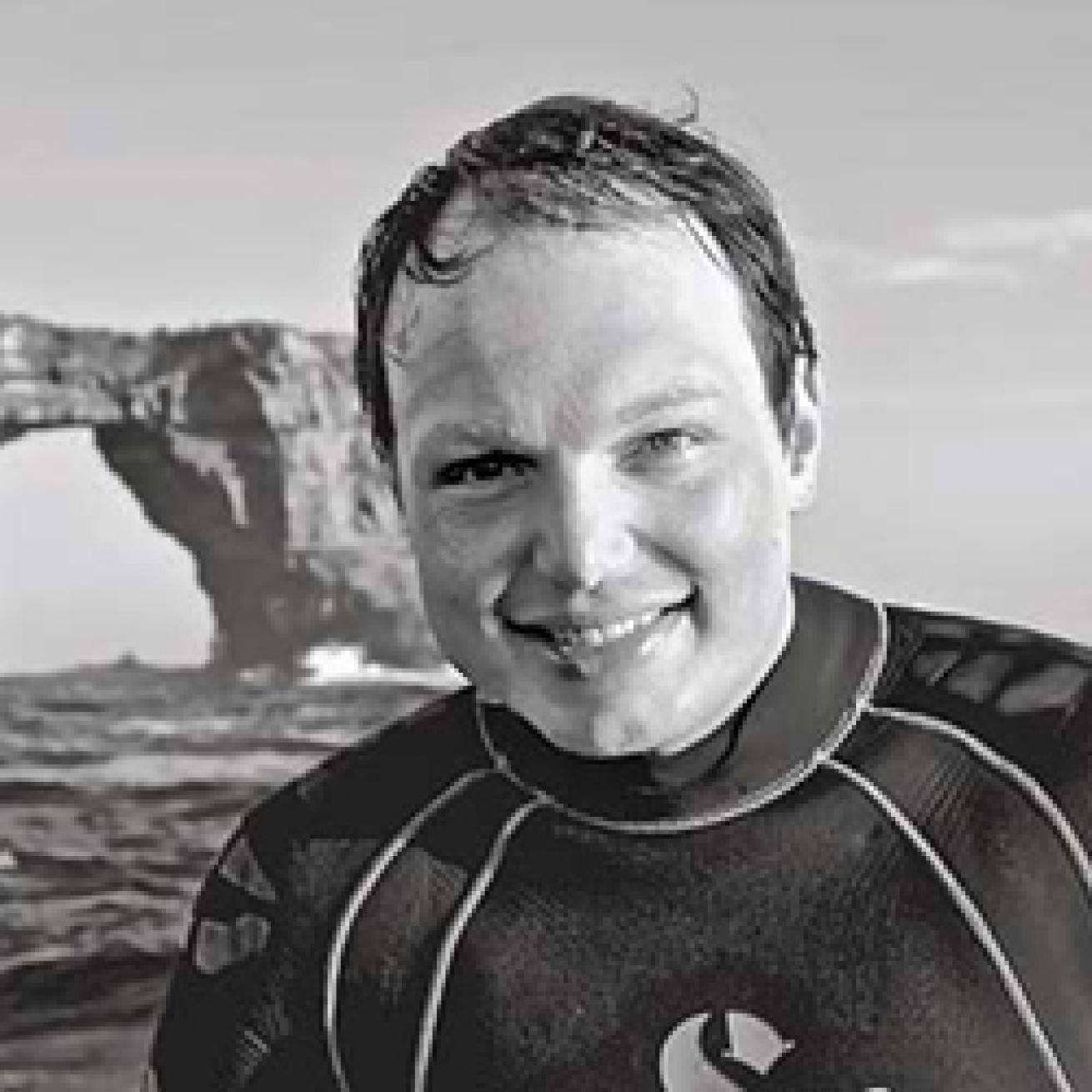
Tobias FriedrichTobias Friedrich is no stranger to suffering for a shot, gravitating toward cold water and potentially threatening animals for his wide-angle achievements. The German began his professional image-making career in 2007, going on to write a how-to book in 2013 simply titled Underwater Photography. See more of his work at below-surface.com.
In Norway, Friedrich sought out an orca run — similar to South Africa’s sardine run but much less trafficked by photographers. It required four years of planning following a tip from a friend.
A similar tip landed him off the coast of Oman in February 2012.
While in the water, the fin of one humpback hammered down on his hand and caused it to bleed.
“If it was 12 inches closer, it would have hit my head, and maybe I would have become unconscious — that would have been dangerous,” says Friedrich.
Experiences like that don’t instill fear in him, but more respect for his subjects.
“If you want a good picture, you must overcome the fear,” he says. To do so, he reminds himself of the facts.
“The orcas are exciting — there hasn’t been one accident with humans in nature ever recorded that I know of,” says Friedrich. “So you can feel quite good, even though this animal could potentially rip you apart in seconds.”
Friedrich pauses after he says this. He talks a bit more about having found a few limits in terms of risks he wouldn’t take, but otherwise, he’s in the water.
“After all, if you stay home, you don’t get the picture — it’s that simple.”
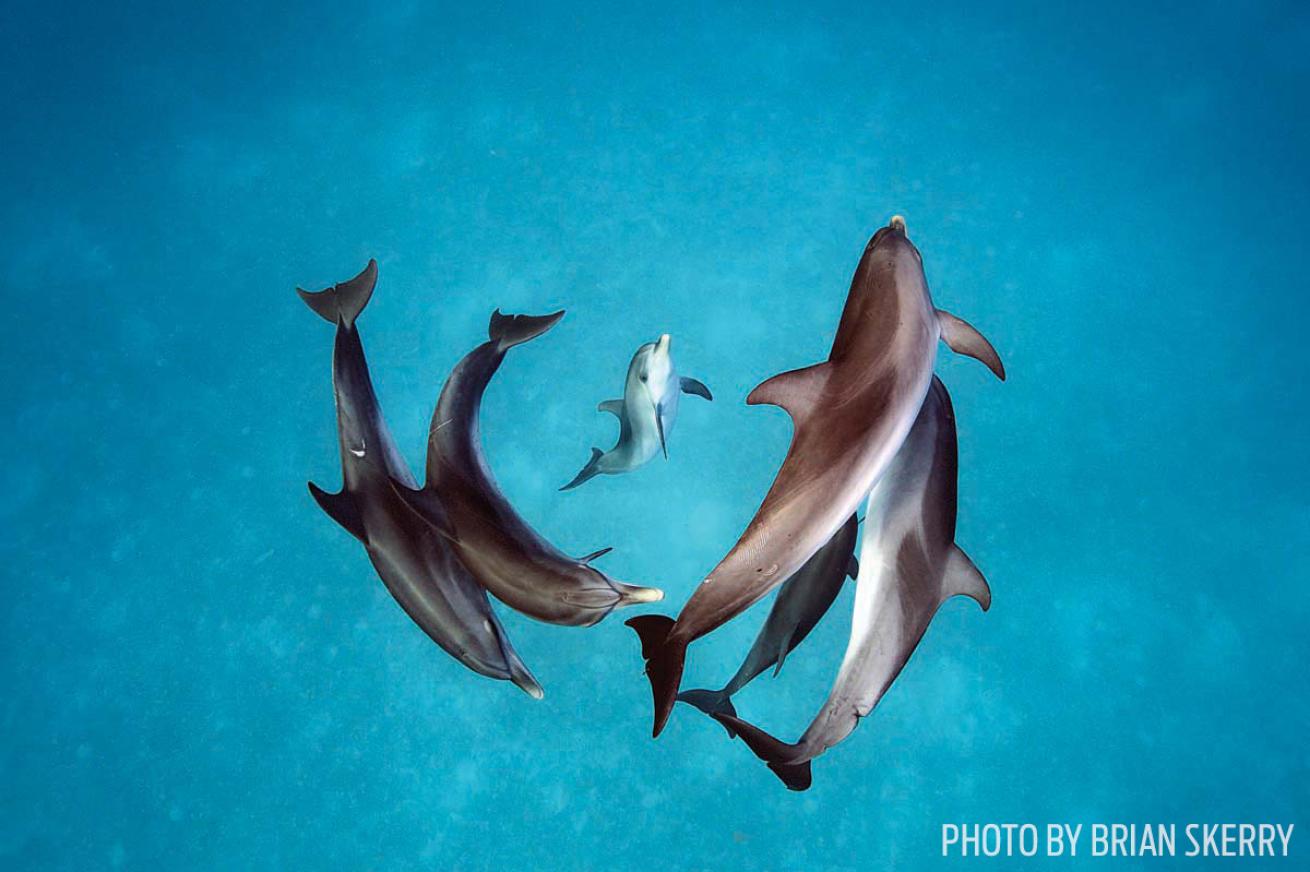
Brian SkerrySpotted dolphins around Bimini in the Bahamas
THE LEGEND
“You should change out your tank,” says Lou Lesko, who is prodding his boss, National Geographic magazine shooter Brian Skerry, to remain hopeful. Only hours remain of their 25-day March 2013 expedition to Puerto Madryn, Patagonia, where Skerry sought to be the first to document the cooperative feeding behavior of the area’s dusky dolphins. Winds howling at 40 knots didn’t help, nor did green, plankton-rich seas. Earlier that morning, dejection sent Skerry packing up until the captain offered one more try.
At 6:43 that night, minutes before last light, the captain spies birds.
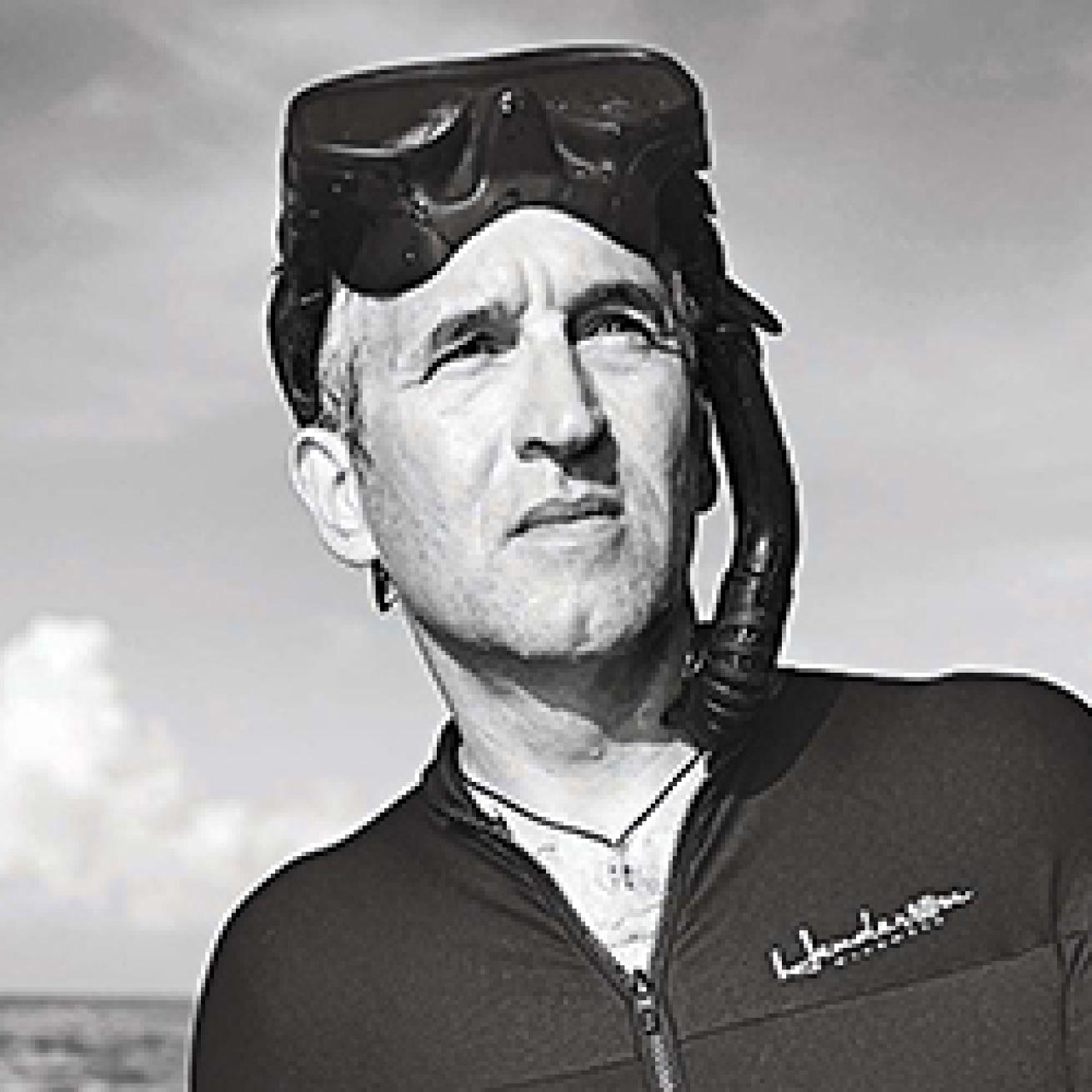
Brian SkerryBrian Skerry has enjoyed a decades-long career as a contributing photographer to National Geographic, spending roughly 10,000 hours underwater shooting 25 stories on subjects ranging from the struggle of the harp seal among frozen seas to the sharks of the Bahamas. See his work at brianskerry.com.
“Go!” His shout cues Skerry into water. And for the next 17 minutes, he spins 360 degrees — shooting, shooting, shooting.
“I had one magical frame with six dolphins, no tails cut off, and one is inches away from grabbing an anchovy, and there are scales all in the water,” says Skerry. “It proves that you can’t give up.”
For his piece on dolphin intelligence, Skerry traveled to nine locations over two years, including Patagonia and the Bahamas (above). Since 1998, he has filed 25 stories for the groundbreaking magazine. Each began with a desire to document something never before recorded — a drive born out of Skerry’s childhood dream to become an explorer. He’d first been drawn to the ocean during visits to the beaches of Cape Cod, Massachusetts.
“I was always dreaming of what lies beneath the dark, ominous waves.” It’s a question he now answers daily.

Alex MustardCoral spawning in the British West Indies
THE MARINE BIOLOGIST
Dr. Alexander Mustard’s first career as a marine biologist explains his proclivity for animal-behavior shots and gives him a certain advantage in the water.
“It helps me recognize interesting behaviors and understand what I am seeing,” says Mustard. “A simple example is that sometimes you find a critter, like a nudibranch, and it won’t be in the greatest position. It’s tempting to think about moving the subject.”
But if a shooter refrains from relocating the slug and instead snaps a few frames, the results might surprise.
“When you see the picture on the screen, you realize the nudibranch was in the middle of eating or laying eggs. You’ve captured an amazing behavior — only it was so tiny at the time [that you didn’t realize it], but it’s very clear in the picture.”
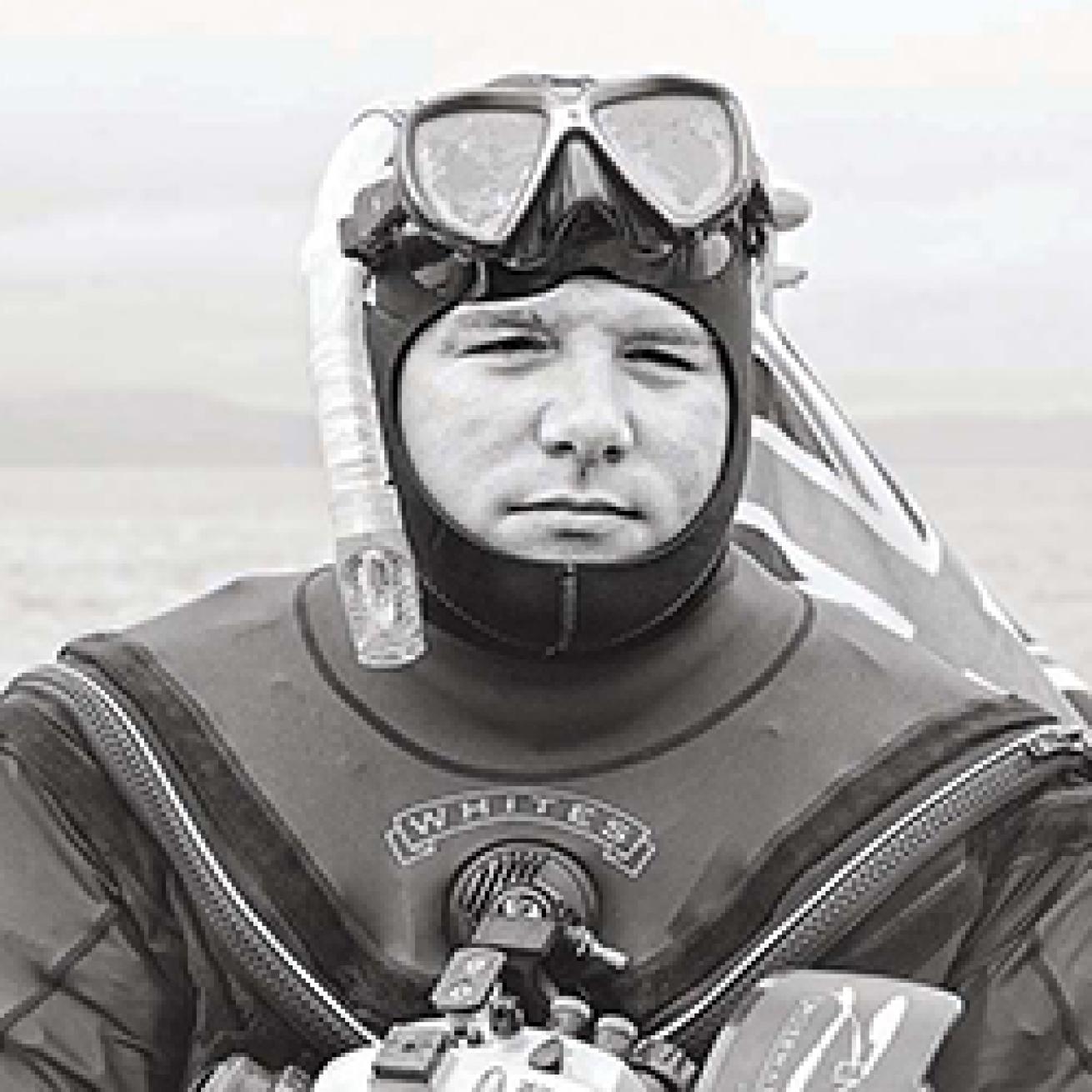
Alex MustardMarine biologist Dr. Alexander Mustard has been shooting photos for 30 years, and is a five-time winner of the BBC Wildlife Photographer of the Year award. The U.K. resident also leads yearly instructional underwater-photography trips to Grand Cayman and the Red Sea. You can find his work at amustard.com.
He stresses that you don’t need a Ph.D. to read behavior. Anyone can pick up a book or log time on the reef.
“When you watch fish, you get tuned in to that sort of thing — it’s not always academic knowledge, but field knowledge. Many times I grabbed shots of fights or mating behaviors because I had a sense something unusual was going to happen.”
Often Mustard stacks the deck to increase the odds that he’ll be in the right place when a phenomenon is occurring. In 2003, long before coral spawns were on every diver’s radar, Mustard determined precisely when Grand Cayman’s corals would release their eggs, turning the reef into an underwater orgy.
Sometimes he can calculate when something specific will occur; otherwise, he aims to be in the water around the full or new moons.
“The biggest things that shape the lives of marine animals are tides,” says Mustard.
And the full and new moons bring the biggest tidal changes. This is when fish are most likely to lay eggs or spawn.
“But once your eye goes to the viewfinder,” he says, “you forget the science.”
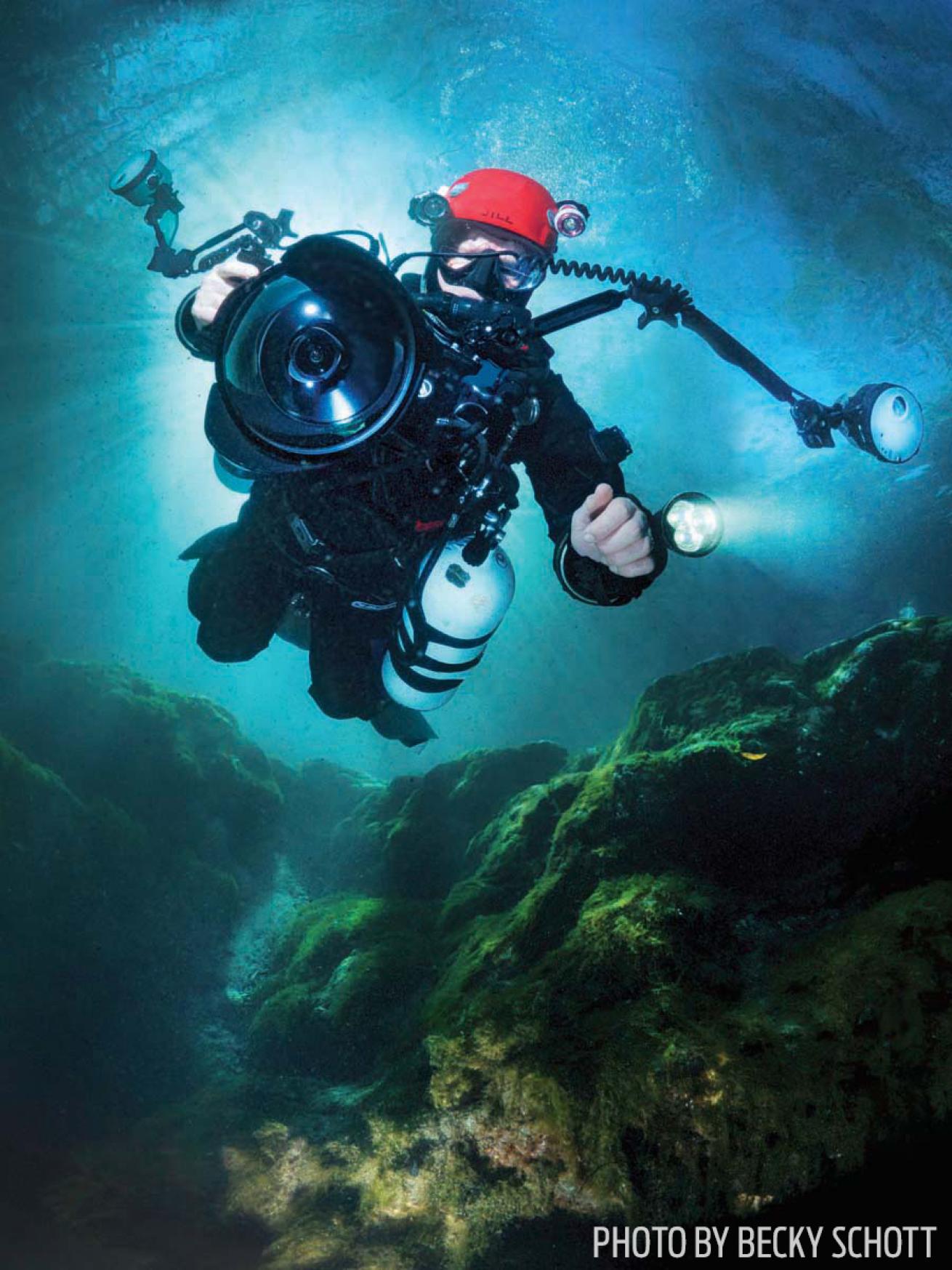
Becky SchottJill Heinerth cave diving in "Little Devil"
THE FILMMAKER
For cave-diving pioneer Jill Heinerth, the progression from still photography to film wasn’t so much a choice as a feeling of responsibility.
“I realized that my explorations were extremely powerful in terms of being able to communicate the value of Mother Nature,” she says.
To that end, she has used her skills and access as a caver to capture little-seen underwater spaces for the TV series Nova and the TV miniseries Oceans.
In 2012, she felt the desire to do more.
“I realized I’m swimming in people’s drinking water.”
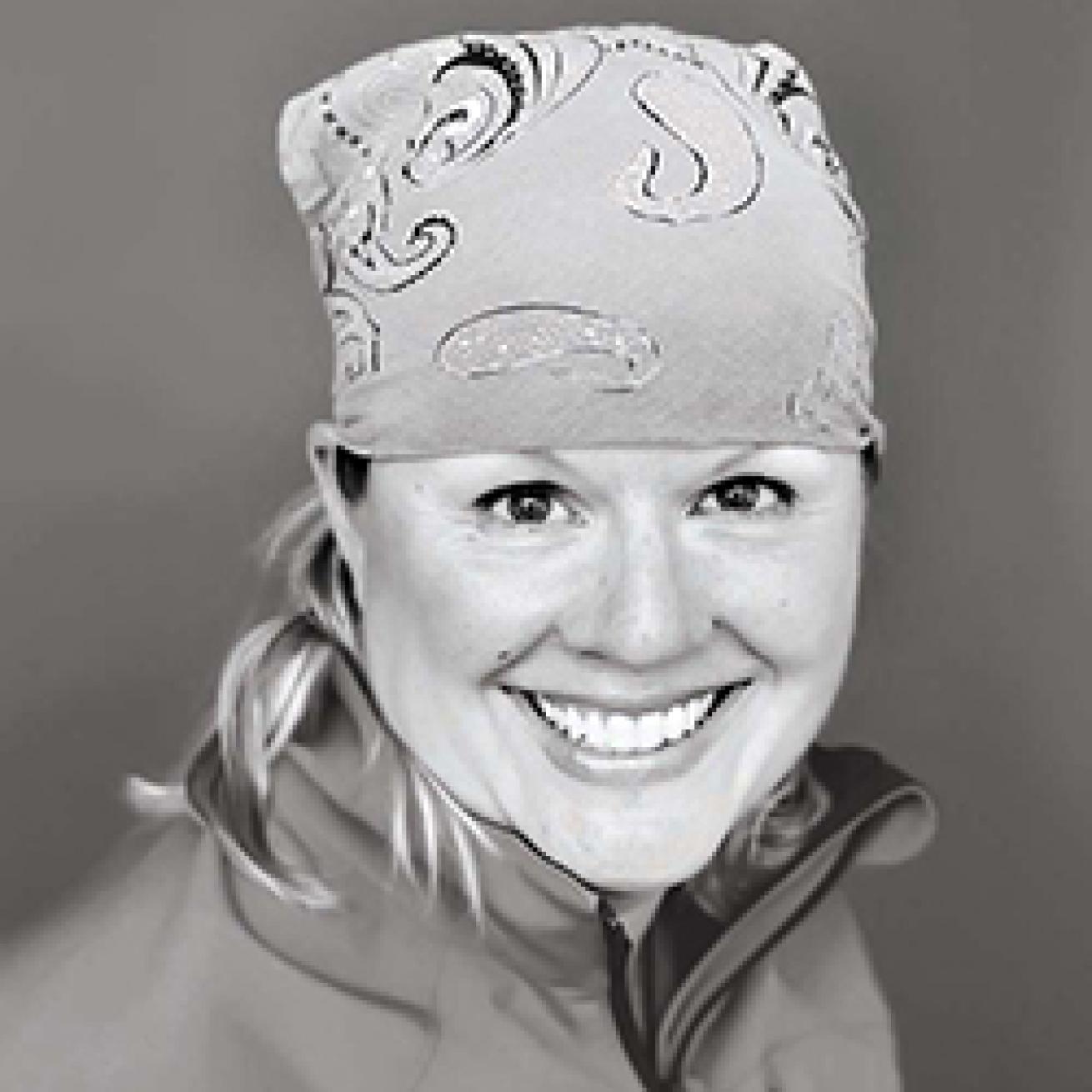
Jill HeinerthJill Heinerth is an inaugural class member of the Women Divers Hall of Fame and a member of the Explorers Club thanks to her cave-diving achievements. Heinerth has dived deeper into caves than any other female. Her film We Are Water is available on amazon.com, and her images can be viewed and purchased through intotheplanet.com.
The impact of her community on the caves she loves was a story she could tell only in film. Still photography can capture, say, one tire in a cenote, but film allowed her to document the entire journey of water through her local environment, from superstore parking lot to cave systems and beyond — which she did in her 2013 documentary, We Are Water.
“We were following a drop of water through the environment, no matter where it would lead us,” she says.
That story required film, but day to day, Heinerth toggles between options: Sometimes she chooses film and other times photos.
“I always take both, and I wonder, ‘Which do I shoot now?’ The photographer has to capture one single moment, and so much has to come into play, especially if the shot involves a diving partner. But with video, you have to tell a story, and you can do that with a lot of narrative shots edited together.”
Regardless of how she captures the moment, Heinerth is following a passion she can’t ignore.
“I have this desperate urge to share what I see with others,” says Heinerth. And it’s an urge she encourages in others.
“There are no barriers,” she says. “You can go out and start your own YouTube channel tomorrow.”
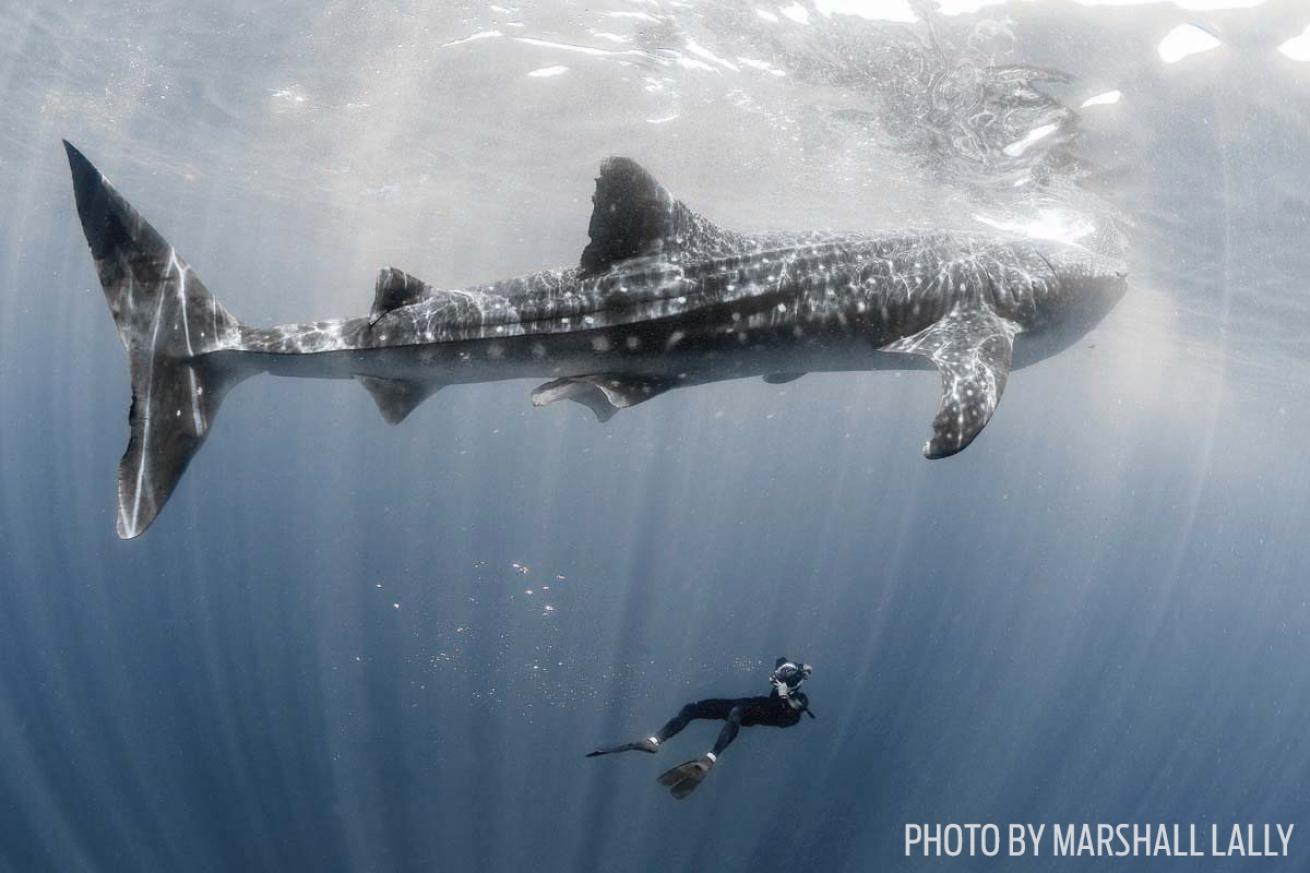
Marshall LallyShawn Heinrichs swims in closer to photograph a whale shark
THE CONSERVATIONIST
Conservationist photographer Shawn Heinrichs aimed for shock value early in his career — which is how he knows it isn’t the best way to inspire change.
“People have become numb to that type of imagery,” says Heinrichs. “Those shots make people want to forget about the issue as opposed to lean into it. Instead, I look for the hauntingly beautiful.”
Take, for example, the shot he took in Taiwan in 2011 when working with WildAid and the Pew Charitable Trusts. The image captures rows of shark fins drying in the sun, but from afar — until you realize you’re viewing death — there’s something pleasing about the image’s geometric repetition.
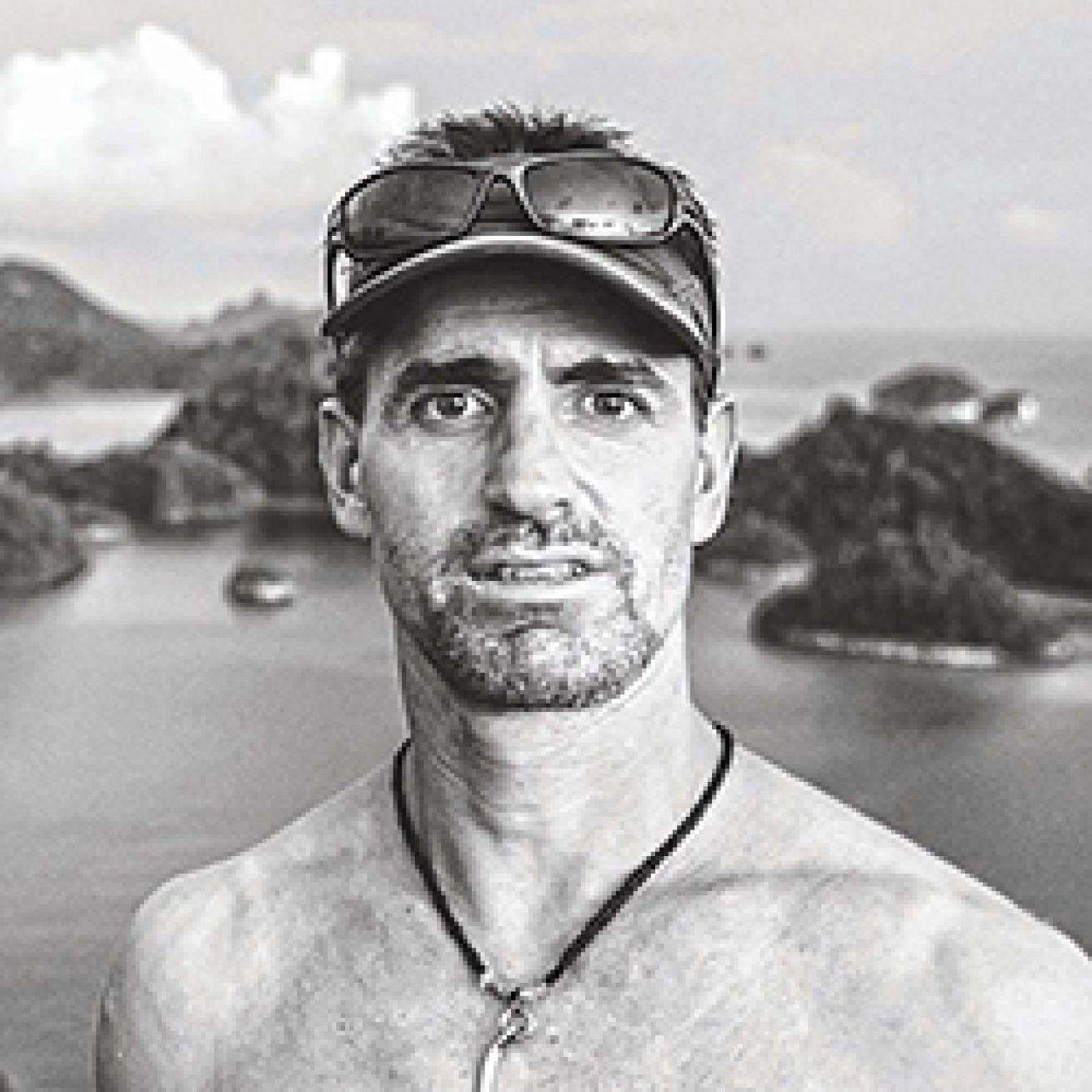
Shawn HeinrichsConservation photojournalist and cinematographer Shawn Heinrichs fights to save sharks, mantas and other marine wildlife, rallying support against finning and illegal fishing. For his work to save our marine environment, he was named Scuba Diving’s 2011 Sea Hero of the Year. Learn more about Heinrichs at bluespheremedia.com.
“I take an artistic approach,” says Heinrichs. His eye is drawn to unusual shapes, surprising contrasts or moments that reflect culture. In other words, entice with beauty, letting the conservation message reveal itself second. He’s taken photos of kids playing atop a fin whale’s head in Indonesia, and locals against a backdrop of stacked-up shark fins.
Heinrichs also shoots beauty underwater, but he aims to share those only with a call to conservation action.
“We are creating an illusion that everything in the ocean is brilliant, but it’s so far from brilliant.”
He challenges divers to take advantage of access to the planet’s wildest spots. If you post galleries on Facebook, Heinrichs charges you to also post an image or two in the middle that document the devastation happening in that location.
“It’s important to not just post a negative image. Don’t leave people depressed — give them action items.”
Says Heinrichs: “If we don’t do this work, there won’t be anything beautiful left to document. It’ll be just jellyfish and empty oceans.”


